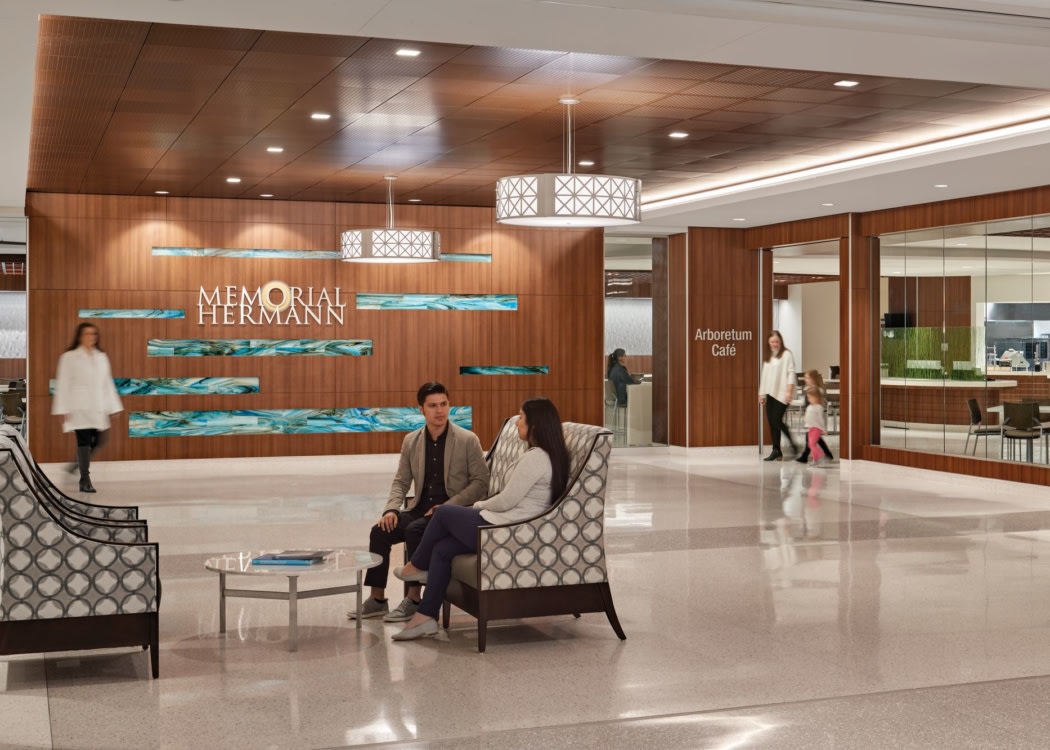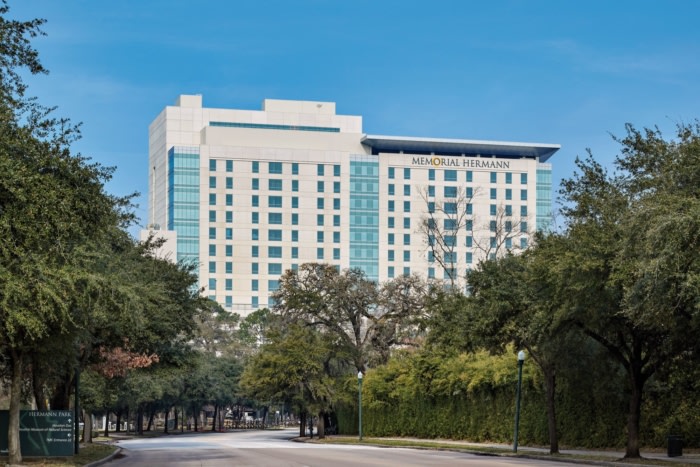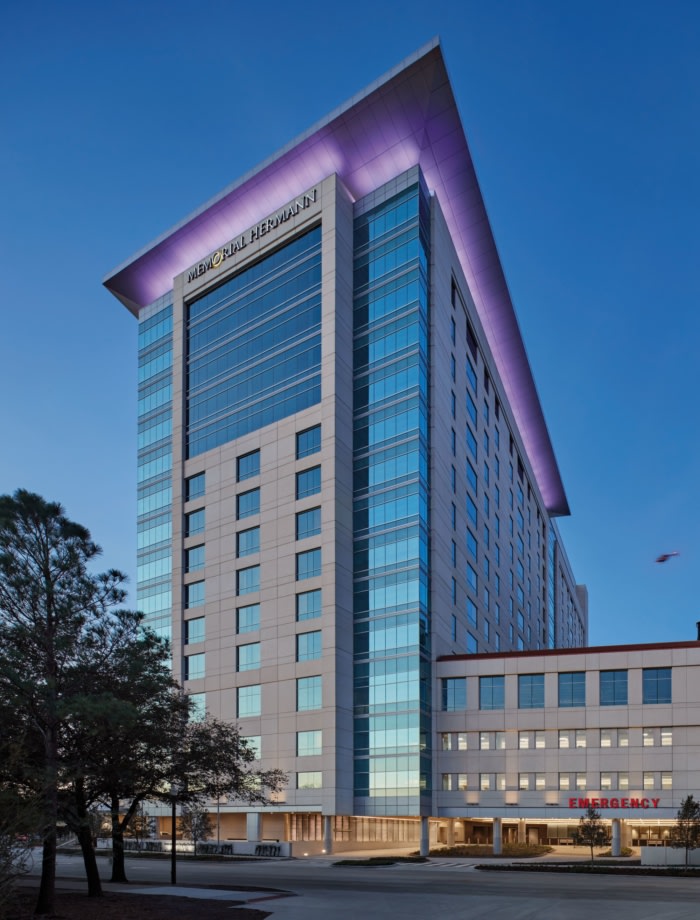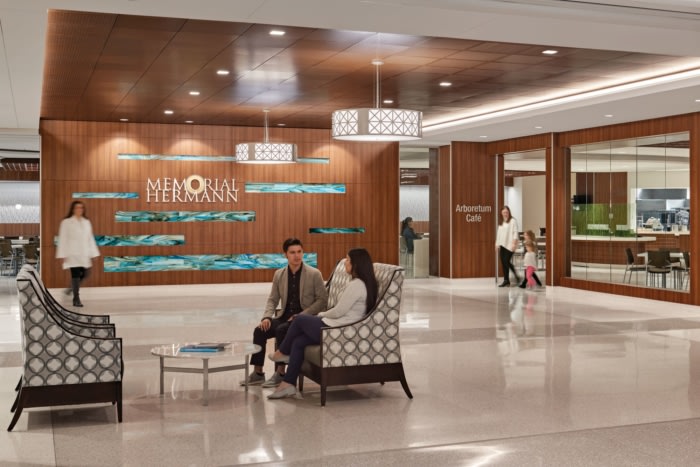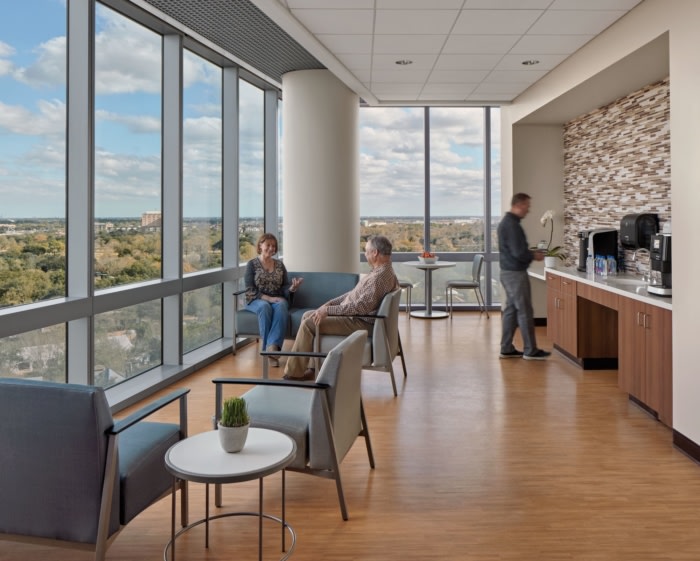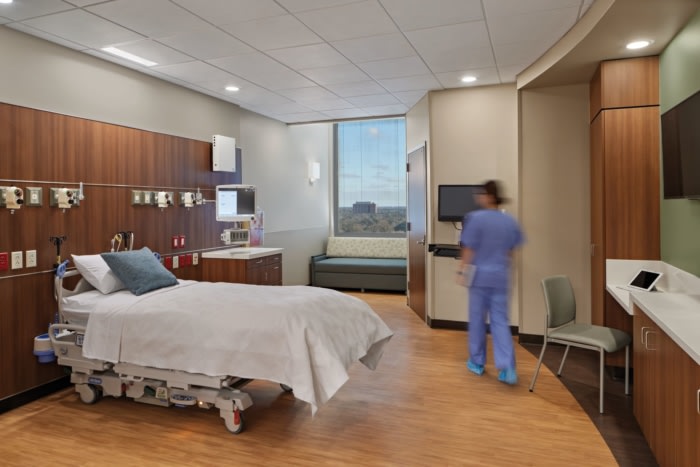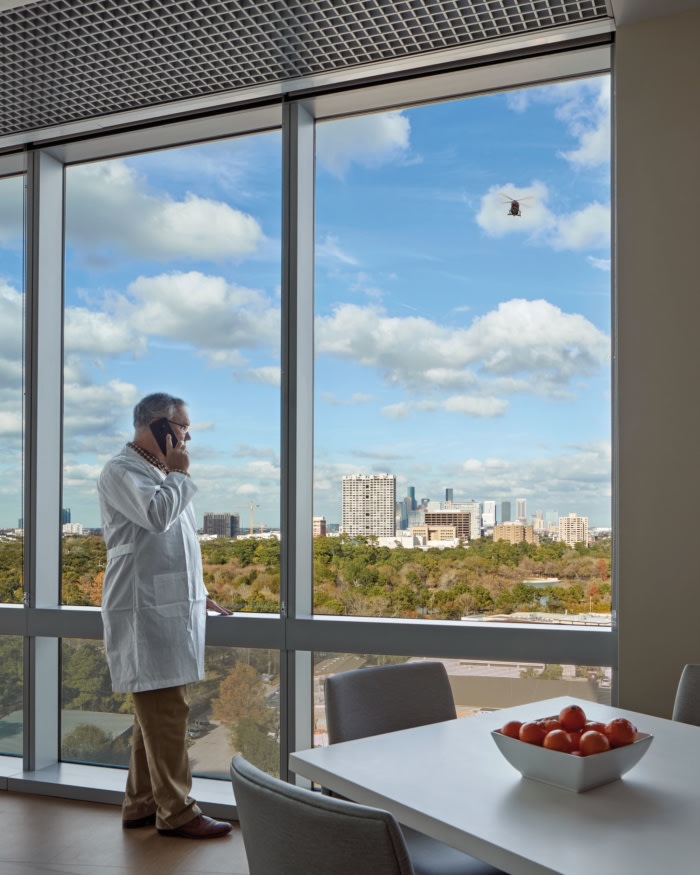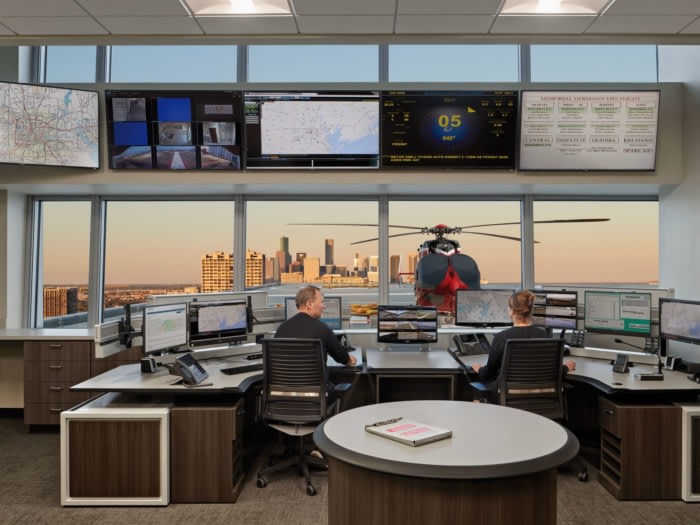Memorial Hermann’s Texas Medical Center – Susan and Fayez Sarofim Pavilion
Page Southerland Page designed the Susan and Fayez Sarofim Pavilion for the expansive Memorial Hermann’s Texas Medical Center in Houston, Texas.
The Susan and Fayez Sarofim Pavilion at Memorial Hermann’s Texas Medical Center campus adds more than 1.3 million square feet of space for surgery, emergency care, intensive care, and administrative and support services. As one of two adult Level 1 Trauma Centers in Houston, the new state-of-the-art critical care tower is designed to support medical, education and research, as well as future growth.
Part of a larger $650-million expansion and renovation, the 17-story tower includes 186 new beds (plus replacement of 71 existing patient beds), 24 operating rooms, and 15 emergency room bays. A 335-seat arboretum café offers patients, families, and staff an attractive respite, and an additional building provides a 900-space parking garage and infrastructure capabilities to support the campus expansion. Additionally, the increase of the Life Flight® 4-space helipad by an additional 10,000 SF provides needed space for Houston’s only hospital-based air medical service.
One of the prime drivers of the master-plan was expansion and space relocation of the surgical program. Existing ORs were located in two different buildings with sizes varying from 527 to 732 SF. Spatial and technological factors meant surgical teams preferred using certain ORs, thus resulting in extremely low utilization of other ORs. When beginning the master plan, the design and the Memorial Hermann teams adopted several guiding principles that promoted functional zoning, improved operational efficiency, and ensured maximum flexibility and adaptability of the departmental spaces. They decided very early to standardize the sizes and adopt a “Universal OR” approach. All 15 new ORs on each floor of Sarofim Pavilion are designed as 700 SF rooms with standardized sizes and layout to maximize flexibility and adaptability of use and operational models.
The development of the emergency department and surgical programs drove the expansion of the Burn, Surgical Trauma Immediate Care Unit (STICU), Surgical Intermediate Care Unit (SIMU) and Acute Inpatient Beds in HP2. Accommodating rapidly evolving technology and shifting demographics, controlling the adaptability of the beds is the most important feature of the new bed tower. To maximize flexibility, all of the new ICU, IMU and acute patient rooms are designed as Universal Rooms, which accommodate the greatest level of acuity so that they may be modified to any level as dictated by the hospital. This standardization allows for smoother relocation of entire units or conversion of a room with less downtime during a renovation.
Each patient floor is designed into neighborhoods of eight or 11, depending on the acuity of the floor. The ICU has four eight-bed pods while IMU and Acute Beds have four 11-bed pods. Each neighborhood comes equipped with support spaces and two centralized nurse stations, providing quick access to colleagues and allows for greater collaboration and stronger communication between staff members. Another feature of the neighborhoods is that it allows for a separate circulation for patients, public and service traffic. The floor plan is set up into “on stage” corridors for family and patients and “off stage” for staff. Workspace hoteling accommodations for roaming staff members, like clinical managers and social workers, are provided off stage.
Designed to accommodate future growth, the award-winning Susan and Fayez Sarofim Pavilion truly positions Memorial Hermann for long term success within the Houston community.
Design: Page Southerland Page
Contractor: Vaughn Construction
Photography: Courtesy of Page Southerland Page

